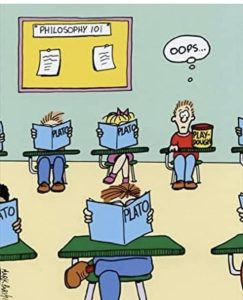During the 13 years that I was a professor, department head, and finally a college dean at the University of Illinois, I was always puzzled by the “unwritten rule” that guided admissions to the university in general and to my college in particular.
Now that the U.S. Supreme Court has finally ruled 6-3 that race-based affirmative action in college admissions is unconstitutional, perhaps the confusion will cease.
I say confusion because, during the first year that I was a department head, I was told that the concept of affirmative action only applied to black, Hispanic, and possibly Native American applicants.

“What about Asian or Asian-American students?” I recall asking a university administrator.
“Well, that’s a difficult issue,” I was told.
“Difficult, how? Isn’t affirmative action for all minority students?”
“Uh, yes. For all minorities except Asian-American students.”
“I don’t understand. Are Asians considered minorities or not?”
“Well, they are minorities, but because they normally excel academically, as opposed to black or Hispanic students, we don’t see them as an underprivileged or underrepresented class.”
At the time, I thought, “This is really unfair to Asian-American students. The university is essentially making a broad assumption about those students, saying that they are all more academically advanced than other minorities and that they should, therefore, be excluded from any race-based admissions policy.”
The Supreme Court ruling applied specifically to the policies at Harvard University and the University of North Carolina at Chapel Hill, which had guidelines that seemed to reward some minority students with an easier path to admission while creating an additional hurdle for White and Asian-American students. Harvard and the University of North Carolina were both targets of discrimination lawsuits brought by Asian-American students.
Ironically, both cases turned the usual Black/White dichotomy on its head by using Asian American plaintiffs, who argued that attempts to boost one minority ended up hurting another.

Both schools said they needed to “advantage” Black and Hispanic students to achieve enough diversity to enhance the educational experience for all students.
Chief Justice John G. Roberts Jr., writing the key opinion, said students must be treated on the basis of their “experiences as an individual — not on the basis of race.”
“Many universities have for too long done just the opposite. And in doing so, they have concluded, wrongly, that the touchstone of an individual’s identity is not challenged bested, skills built, or lessons learned but the color of their skin. Our constitutional history does not tolerate that choice,” the chief justice wrote.
Roberts added that affirmative action amounted to racial balancing, which he said is “patently unconstitutional” under the 14th Amendment’s Equal Protection Clause.
So what does this mean for administrators and deans when considering a student’s admission?
While the ruling says affirmative action, as it has been applied for the past several decades, is now unconstitutional, Universities may still look at how potential students’ race affected their personal circumstances, either in facing discrimination or finding inspiration. However, universities cannot create a workaround by asking students to talk about race in admissions essays, for example, then using those to advantage certain minorities.
All three Democrat-appointed justices dissented. They said the 14th Amendment doesn’t guarantee racial neutrality but rather “racial equality,” and that can sometimes mean needing to use “race-conscious” policies to achieve that equality.
“Today, this court stands in the way and rolls back decades of precedent and momentous progress,” wrote Justice Sonia Sotomayor. “It holds that race can no longer be used in a limited way in college admissions to achieve such critical benefits. In so holding, the court cements a superficial rule of colorblindness as a constitutional principle in an endemically segregated society where race has always mattered and continues to matter.”
As a former university administrator and college dean, I am relieved that this confusing policy, with its clearly discriminatory impact on Asian-American students, has been settled once and for all.
I am also glad to see that the cudgel of affirmative action will no longer disadvantage white students who come from poor and disadvantaged backgrounds.
Case in point, a niece of mine who carried an almost 4.0-grade point average as well as an athletic and community service background into the college admissions process but who was declined admission to her college of choice because of her race. Her sin? She was white.
As a dean, I always leaned toward merit-based admissions to my college. I always found that doing that did not disadvantage anybody. In fact, I found that the idea of DEI (Diversity, Equity, and Inclusion) worked just fine without any artificial enhancements such as race-based affirmative action.
My theory was to admit the best students no matter their race, ethnicity, or religion. That would ensure that my college was turning out well-educated students.

Universities were not created to be laboratories for social and societal experimentation and reengineering, nor were they created to heal the ills of racial, ethnic, or religious discrimination.
I never subscribed to the idea that a university should be a place obsessed with racial diversity.
The only diversity I felt compelled to support was the diversity of thought, and that is achieved only when a university behaves as an unrestricted forum that exposes students to ALL ideas, philosophies, political theories, and societal opinions, be they liberal or conservative, fresh or frayed, conventional or avant-garde.
During my time in academia, I found that most students had the intrinsic ability to absorb a substantial range and quantity of diverse knowledge without collapsing under its heft.
As the poet Robert Frost once said: “Education is the ability to listen to almost anything without losing your temper or your self-confidence.”
[If you enjoyed this post, please consider subscribing to ForeignCorrespondent and tell your friends to subscribe. IT’S FREE! WHAT A DEAL! If you’ve received this from a friend and would like to be added to our distribution list for future blog posts, please enter your email address in the sign-up for notifications box at https://ronaldyatesbooks.com/category/foreign-correspondent. You can also find my commentaries on Substack at https://ronyates.substack.com/ and the American Free News Network at https://afnn.us. And please feel free to comment. WE LOVE COMMENTS!]


“Universities were not created to be laboratories for social and societal experimentation and reengineering, nor were they created to heal the ills of racial, ethnic, or religious discrimination.”
100% correct! Great post.